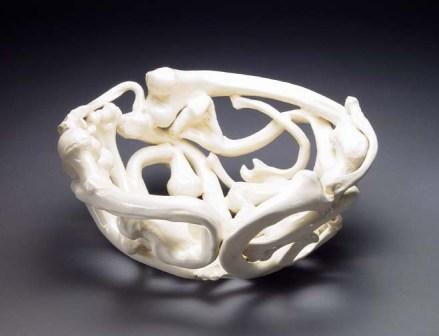

 |
||||||||
|
|
 |
|||||||
|
|
||||||||
|
Educational Philosophy The history of ceramics has been dependent upon the passing down of information from one generation to another for centuries. Similar to education, it continually redefines itself through its own diversity. It is my belief that a noble education requires the benefits associated with an outstanding arts program. Art offers each student an opportunity to pursue, create, and express ideas that are personally meaningful and relevant to their own lives. Fine art consists of a combination of presentation and communication. Artists present media in order to communicate an idea or feeling. In studio ceramic courses, I motivate students to challenge themselves to think creatively. In ceramics, as with any medium, there is a core of technical information that is necessary in order to produce a tangible three-dimensional form. A student must be willing to acquire an understanding of clay as a plastic media in order to interpret and translate individual ideas, feelings, and thoughts into a synonymous three-dimensional work. I believe that craft merely refers to skill and the fine art aspect stems from one’s ability to make critical judgments on the validity and/or importance of their ideas. Individual ambitions become reality when a student achieves the self confidence within an atmosphere that is willing to accept creative thought. Basically, my philosophy is that a student in my course will be able to communicate via 3-D formats because they will: have necessary technical skills to do so, ability to make critical decisions concerning their ideas and work, and the ability to verbally explain and discuss the idea and completed work. Through art and appreciation a student will not only reinforce their understanding of the world around them, but also gain new insight into their own lives as well. The arts are a vehicle for relating experiences, feelings, and the human condition. Education of the arts affords students an opportunity to apply and comprehend aesthetics, experience the creative process, learn about the history of art, and ultimately make critical judgments. |
|
|
|
|
| Site Map |